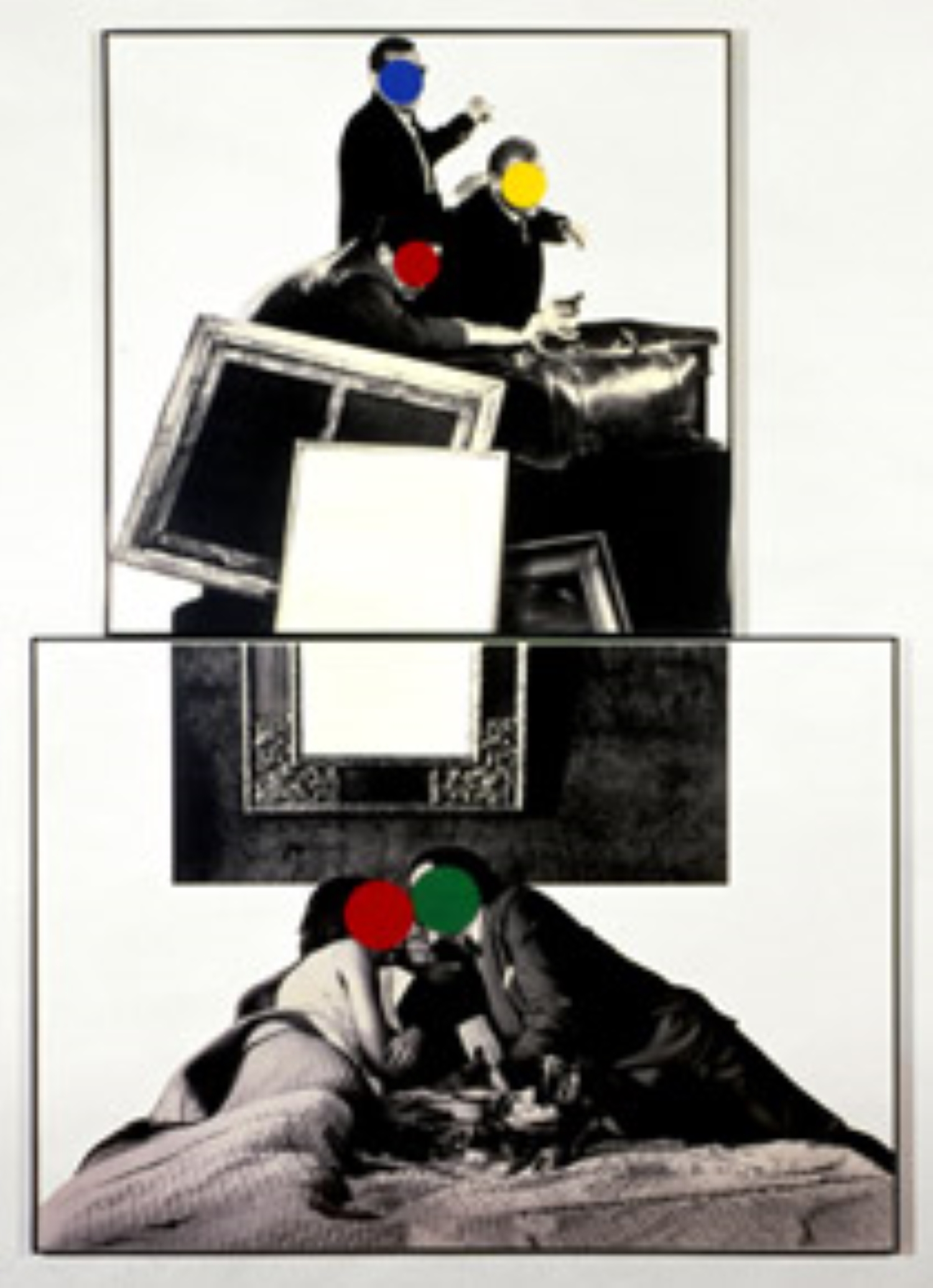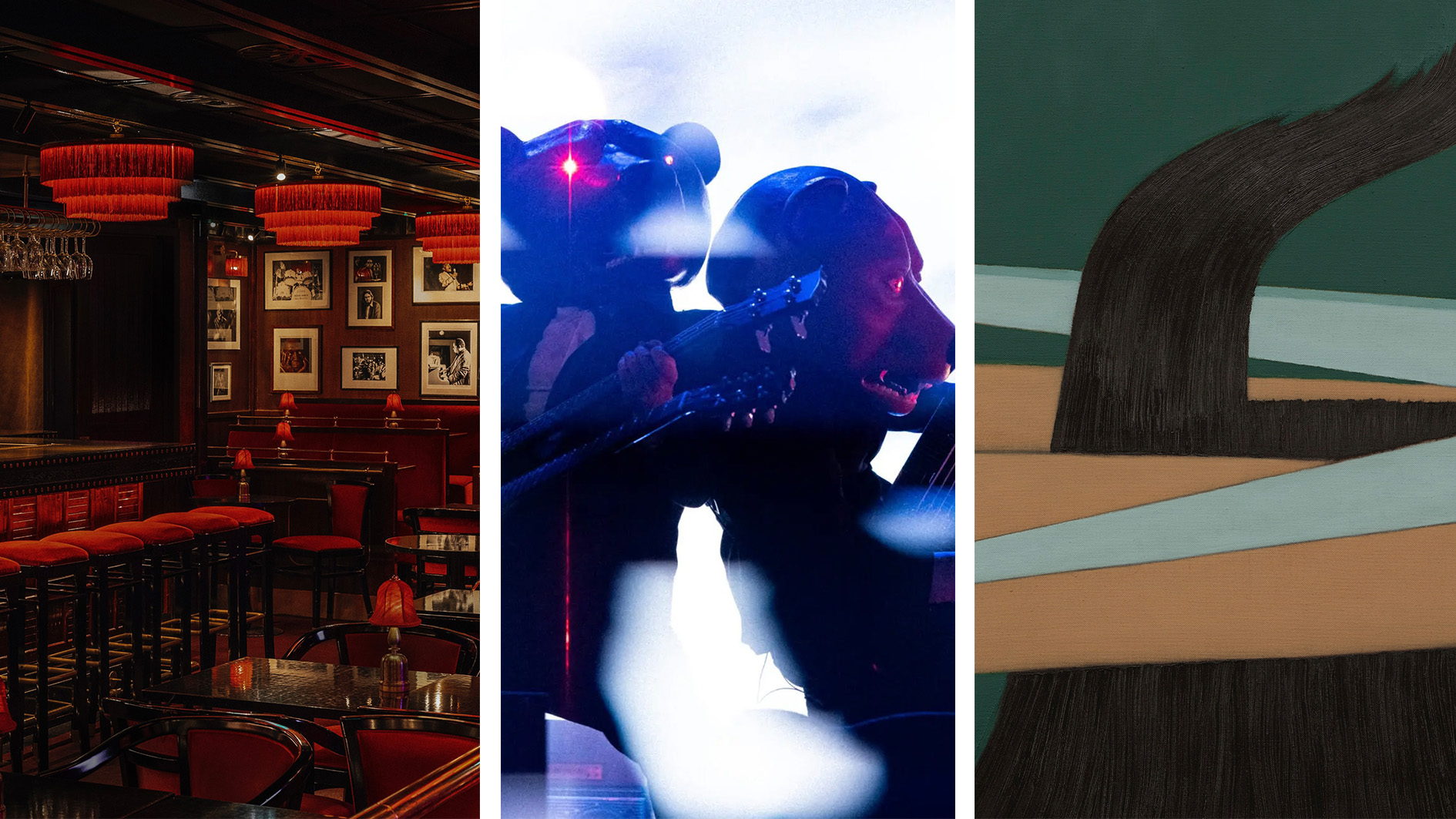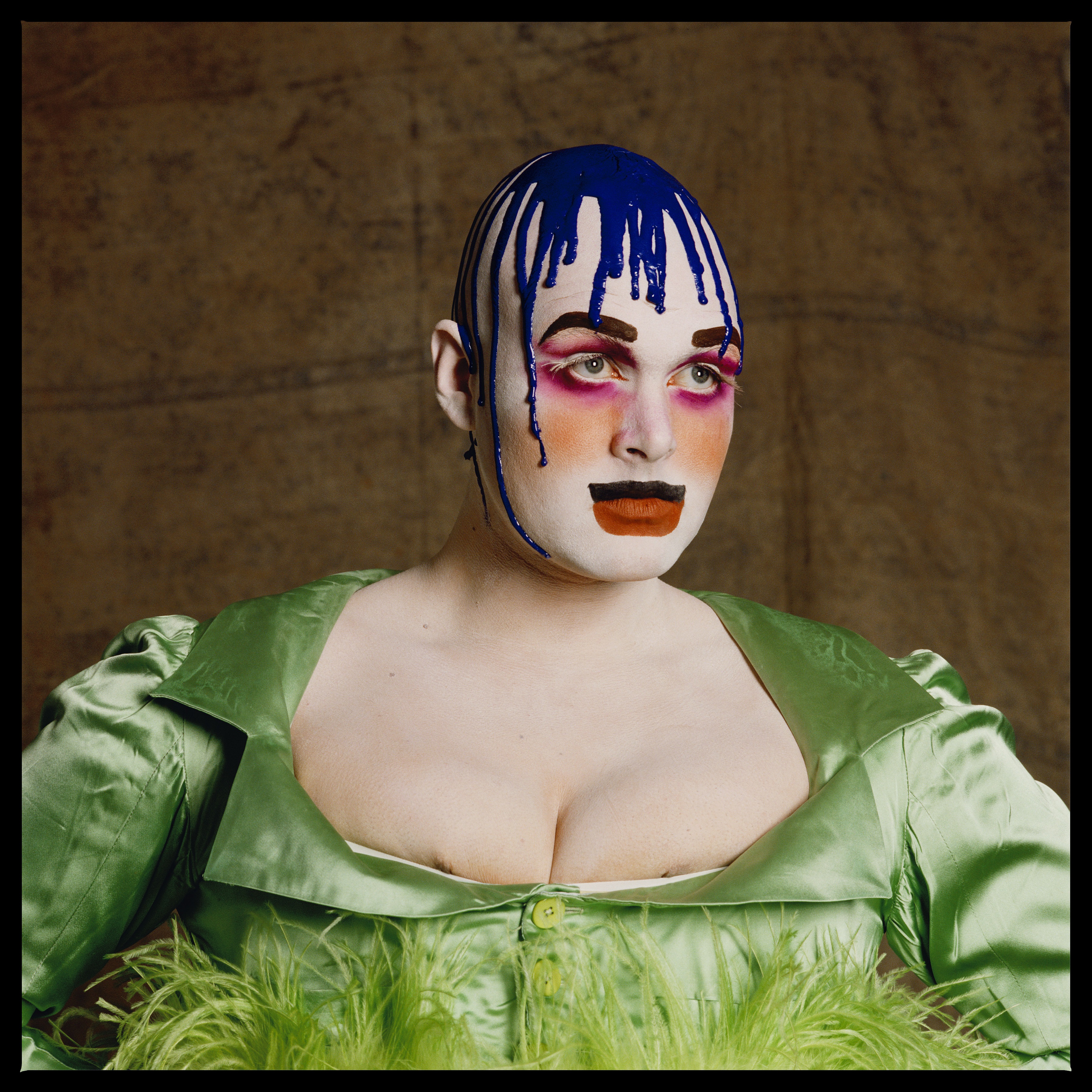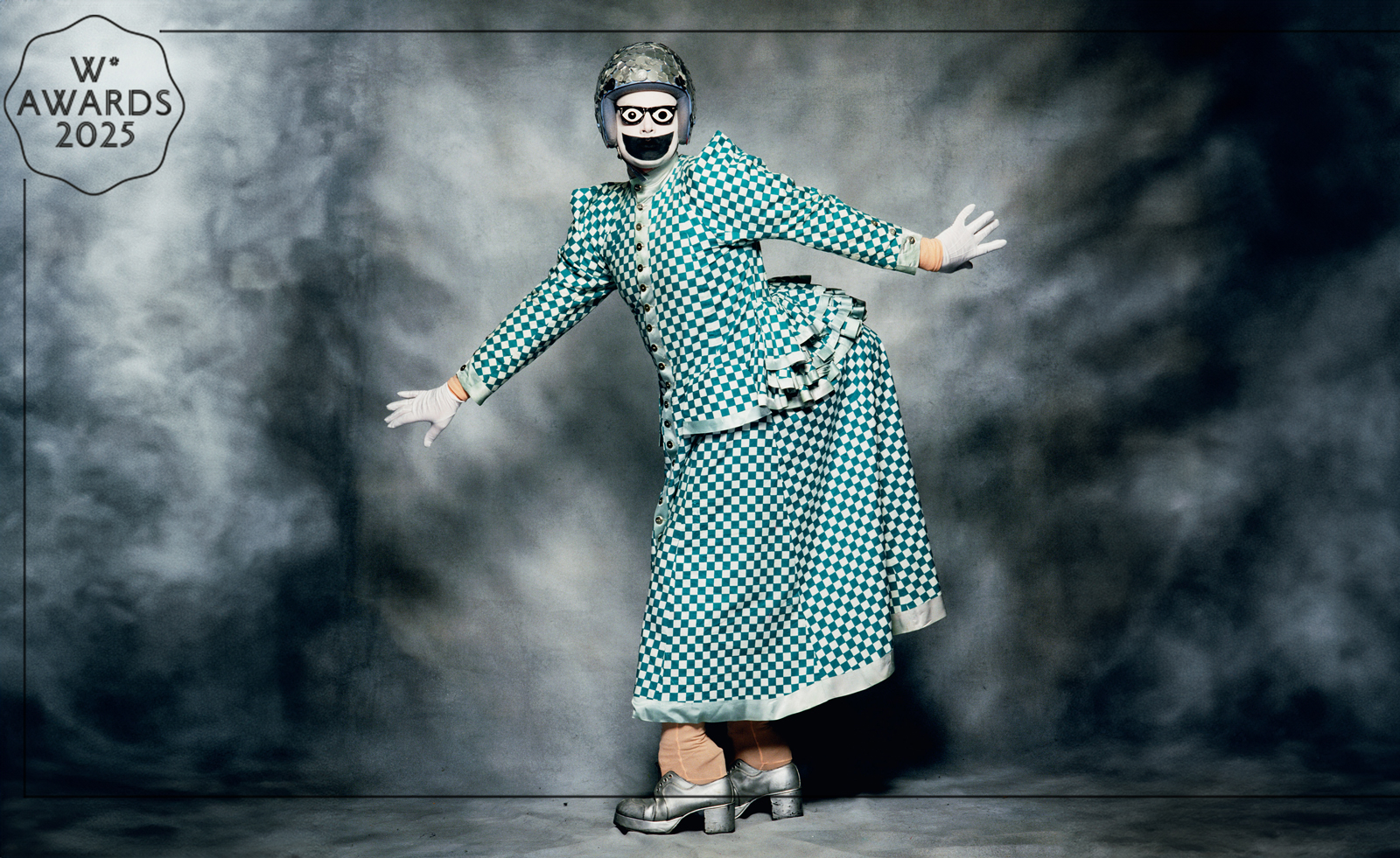John Baldessari at Tate Modern and Sprüth Magers

Burning one’s work would to most people signal the end. But when John Baldessari burnt the majority of his existing artwork on 24th July 1970, an act he called ‘The Cremation Project’, it was very much a beginning; from the ashes rose the start of the Conceptual art movement.

See more of Baldessari’s work from both shows
It’s hard in today’s art scene to imagine a time before conceptual art and fitting that as Frieze descends over London (where it’s difficult to find a piece that doesn’t put concept first) Baldessari is having a retrospective at Tate Modern. The 14 rooms provide a chronological journey, showing how Conceptual art developed from humble, if radical, origins into what we know today through the work of one man who has been at the centre of the movement all along.
Baldessari himself describes the continuing thread of his approach as an attempt ‘to look between things instead of at things’ and this makes a lot of sense in the context of his retrospective. From early works like ‘Tips for Artists Who Want to Sell’, which delivers exactly what its title says, to the final room where his 2009 ‘Brain/Cloud’ is installed (the same object becomes either cloud or brain depending on its backdrop) – the overriding mission in his work is to get us to look at life differently.
The way in which he does this is to re-appropriate the everyday – be it words, phrases, colours, objects, photographs or moving images – and present them in such a way as to confound both established uses and expectations. New presentations take on new meanings and, in turn, force us to question the significance and possibility of the mundane.
In much of his work there’s a mischievous, subversive sense of humour: he sings Sol LeWitt’s 35 sentences on Conceptual art one by one to a different tune; he pitches a found photo of a woman next to 16 very different adjectives describing her open-mouthed expression; he erases faces and sections of photographs with block colours, disrupting the narrative and forcing the viewer to study what’s happening elsewhere and what might fill the void.
What one’s left with after the 14 rooms isn’t just a sense of how widespread Baldessari’s influence has been on so many of the best conceptual artists today but equally that so much contemporary conceptual art doesn’t come close to achieving the same level of wit, intrigue, imagination and appeal.
His reach isn’t just metaphorical either at the moment - across town at Sprüth Magers one of his latest works is also on show. ‘Ear Sofa; Nose Sconces with Flowers (In Stage Setting)’ is a Hollywood Art Deco style tableau, comprising two sconces in the shape of noses, which frame a sofa in the shape of an ear. A model (very much alive) reclines on the sofa and flounces around the set, complete with a dog, turning the scene into a stage, not merely some physiologically inspired furniture. Continuing his current fascination with noses and ears particularly – the scene plays with notions of distended, alien body parts being ‘lived in’.
Receive our daily digest of inspiration, escapism and design stories from around the world direct to your inbox.
-
 The Bombardier Global 8000 flies faster and higher to make the most of your time in the air
The Bombardier Global 8000 flies faster and higher to make the most of your time in the airA wellness machine with wings: Bombardier’s new Global 8000 isn’t quite a spa in the sky, but the Canadian manufacturer reckons its flagship business jet will give your health a boost
-
 A former fisherman’s cottage in Brittany is transformed by a new timber extension
A former fisherman’s cottage in Brittany is transformed by a new timber extensionParis-based architects A-platz have woven new elements into the stone fabric of this traditional Breton cottage
-
 New York's members-only boom shows no sign of stopping – and it's about to get even more niche
New York's members-only boom shows no sign of stopping – and it's about to get even more nicheFrom bathing clubs to listening bars, gatekeeping is back in a big way. Here's what's driving the wave of exclusivity
-
 ‘Nigerian Modernism’ at Tate Modern: how a nation rewrote the rules of art
‘Nigerian Modernism’ at Tate Modern: how a nation rewrote the rules of artAt Tate Modern, ‘Nigerian Modernism’ redefines what we mean by modern art. Tracing a half-century of creative resistance, the landmark exhibition celebrates Nigeria’s artists as pioneers of form, freedom and cultural imagination.
-
 Out of office: the Wallpaper* editors’ picks of the week
Out of office: the Wallpaper* editors’ picks of the weekAnother week, another flurry of events, opening and excursions showcasing the best of culture and entertainment at home and abroad. Catch our editors at Scandi festivals, iconic jazz clubs, and running the length of Manhattan…
-
 The Tate Modern is hosting a weekend of free events. Here's what to see
The Tate Modern is hosting a weekend of free events. Here's what to seeFrom 9 -12 May, check out art, attend a lecture, or get your groove on during the museum's epic Birthday Weekender
-
 The UK AIDS Memorial Quilt will be shown at Tate Modern
The UK AIDS Memorial Quilt will be shown at Tate ModernThe 42-panel quilt, which commemorates those affected by HIV and AIDS, will be displayed in Tate Modern’s Turbine Hall in June 2025
-
 Ed Atkins confronts death at Tate Britain
Ed Atkins confronts death at Tate BritainIn his new London exhibition, the artist prods at the limits of existence through digital and physical works, including a film starring Toby Jones
-
 A major Frida Kahlo exhibition is coming to the Tate Modern next year
A major Frida Kahlo exhibition is coming to the Tate Modern next yearTate’s 2026 programme includes 'Frida: The Making of an Icon', which will trace the professional and personal life of countercultural figurehead Frida Kahlo
-
 ‘Leigh Bowery!’ at Tate Modern: 1980s alt-glamour, club culture and rebellion
‘Leigh Bowery!’ at Tate Modern: 1980s alt-glamour, club culture and rebellionThe new Leigh Bowery exhibition in London is a dazzling, sequin-drenched look back at the 1980s, through the life of one of its brightest stars
-
 Wallpaper* Design Awards 2025: Tate Modern’s cultural shapeshifting takes the art prize
Wallpaper* Design Awards 2025: Tate Modern’s cultural shapeshifting takes the art prizeWe sing the praises of Tate Modern for celebrating the artists that are drawn to other worlds – watch our video, where Wallpaper’s Hannah Silver gives the backstory